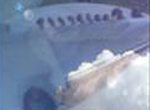![Show/hide content [x]](themes/dragonfly/images/minus.png) Menu Principale
![Show/hide content [x]](themes/dragonfly/images/minus.png) Info Utente
![Show/hide content [x]](themes/dragonfly/images/minus.png) Floating Sarod
![Show/hide content [x]](themes/dragonfly/images/minus.png) Discografia
![Show/hide content [x]](themes/dragonfly/images/minus.png) Visite 39686690pagine viste dal 1 Settembre 2007
|
Stick Curtain Wall and Building Movement
| Autore |
Messaggio |
xysoom


Registrato: Mag 15, 2020
Messaggi: 1676
|
 Oggetto: Stick Curtain Wall and Building Movement Oggetto: Stick Curtain Wall and Building Movement
Inviato: 28-10-2022 5:11:09 |
 |
Stick Curtain Wall and Building Movement
When specifiers design glazed façades they wish to see slim sightlines, when installers quote for work they wish to use the most economic system for the project and often opt to use a well respected 50mm curtain wall system. But despite the systems pedigree, is the ‘off-the-shelf’ design right for the buildings structural design?Get more news about Curtain Wall Suppliers,you can vist our website!
When designing any façade there are two main issues to take into consideration, the dead load of the façade itself and the live loads that are going to be imposed on the façade, which includes wind loading and possible catastrophic events such as seismic and blast loadings. Taking the façade as a single entity, these can be catered for, however, the curtain wall stick or unitised, relies on fixings to the building structure to transfer both loads back at regular mullion spacings, on average at every 1,500 mm. Catering for movement due to live loads on the curtain wall and thermal expansion, is normally catered for with regular sleeved joints, usually at each floor level. So far so good, but what about building movement such as floor edge deflection and building sway?
Floors will deflect once loaded with people and equipment, not all structures will be the same and this deflection will vary. We now face movement in the curtain wall façade itself depending on what is happening within the building. This movement must be catered for otherwise the facade could easily fail when the building is in use.
Unitised curtain wall systems tend to cater for this movement quite well within their stack joints, but in stick curtain wall the issue becomes more pronounced as there is typically much less room when the glass is stacked in these systems.
Looking at a 50mm wide curtain wall we typically have 13mm edge cover on the glazing and a curtain wall nosing thickness of 10mm. Taking 25mm to the centre of the mullion we have a nominal clearance of 7mm (= 25mm – 13mm – 5mm [half of the width of the nosing]). This is a nominal space as we have a facade fabrication tolerance of +/- 1mm and installation tolerance of +/- 2mm. Glazed units, say 1,500mm x 2,800mm have at least a +/-2mm tolerance on fabrication. As you can see, the 7mm can quickly reduce should tolerances stack the wrong way.
Given that there is say 5mm around the glazing with the lower edge of the full height glazing located on 5mm glazing packers, should the floor slab deflect more that 5mm will see aluminium moving to touch or load the glazed unit which could result in glazing failure.
This condition is further restricted when cap-less curtain wall systems are specified where the toggle fixings have an average +/-3mm around the glazed unit.
If the building is designed with floors that run between the building structure, such as columns near the floor edge, floor movement becomes increasingly problematic for the facade. Where columns exist there would be no floor movement, but at the mid-span the floor would move by a given limit, so the floor will ‘sag’ between columns. Given that the glazed units will be located on a transom with two glazing blocks, the glazed units will also be subject to a slight rotation within their glazing rebate where the floor begins to ‘sag’ downwards.
Each building structure will offer various levels of floor edge movement, but it is crucial to request these details from the structural engineer in any curtain wall installation being fixed back to intermediate floors. Once the movement is known, this can then be designed into the curtain wall. The use of special designed spandrel panels or double transoms can cater for this movement and to an extent the rotation of units, this needs careful design often with the systems provider.
|
|
| Torna in cima |
|
 |
|
Non puoi inserire nuovi Topic in questo forum
Non puoi rispondere ai Topic in questo forum
Non puoi modificare i tuoi messaggi in questo forum
Non puoi cancellare i tuoi messaggi in questo forum
Non puoi votare nei sondaggi in questo forum
Non puoi allegare file in questo forum
Non puoi scaricare il file da questo forum
|
|
![Show/hide content [x]](themes/dragonfly/images/minus.png) Menu Principale
Menu Principale HOME
HOME NADA YOGA
NADA YOGA AMBIENTI SONORI
AMBIENTI SONORI VISUAL SOUND
VISUAL SOUND MUSICA LIVE
MUSICA LIVE INDIAN MUSIC
INDIAN MUSIC UTILITA'
UTILITA' AREA RISERVATA
AREA RISERVATA![Show/hide content [x]](themes/dragonfly/images/minus.png) Info Utente
Info Utente![Show/hide content [x]](themes/dragonfly/images/minus.png) Floating Sarod
Floating Sarod![Show/hide content [x]](themes/dragonfly/images/minus.png) Discografia
Discografia![Show/hide content [x]](themes/dragonfly/images/minus.png)
![Show/hide content [x]](themes/dragonfly/images/minus.png) Visite
Visite






